This time, we’re introducing Nina the Starry Bride—a royal palace love story where you’ll experience both rough casual speech and elegant polite language, ideal for deepening your understanding of Japanese in hierarchical settings.
Work Information
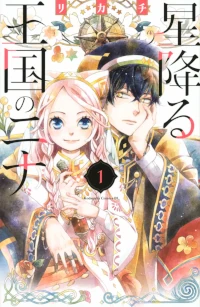
Nina the Starry Bride (星降る王国のニナ)
Author: RIKACHI
Publisher: KODANSHA
Amount of text: moderate
Challenge level: ★★
Latest volume : Vol.16(Apr.2025 / Ongoing)
Story overview
Nina, a girl with deep, sapphire-blue eyes like those of a celestial god, is discovered by Azure Seth Fortuna, the second prince of the Kingdom of Fortuna—because of the beauty of her eyes. She is chosen to stand in as a substitute for Princess Priestess Alicia, who was meant to marry the first prince of the powerful Gargada Kingdom in three months’ time.
Thrust into this fate, Nina is forced to learn royal etiquette, dress in elegance, and deceive a great nation—all while navigating her own destiny. Amid the turmoil, she encounters a once-in-a-lifetime romance. Thus begins a royal palace love fantasy!
The Appeal of This Manga
A girl living in poverty is suddenly thrust into the royal palace in a dramatic turn of events. Under the protection of a seemingly aloof yet handsome prince, Nina must navigate the dangers of impersonating a princess while desperately holding on to her natural innocence and zest for life.
With its charming characters and classic heart-fluttering romance, this story is packed with feel-good elements that offer readers a refreshing escape—a brief but welcome reprieve from the stresses of daily life.
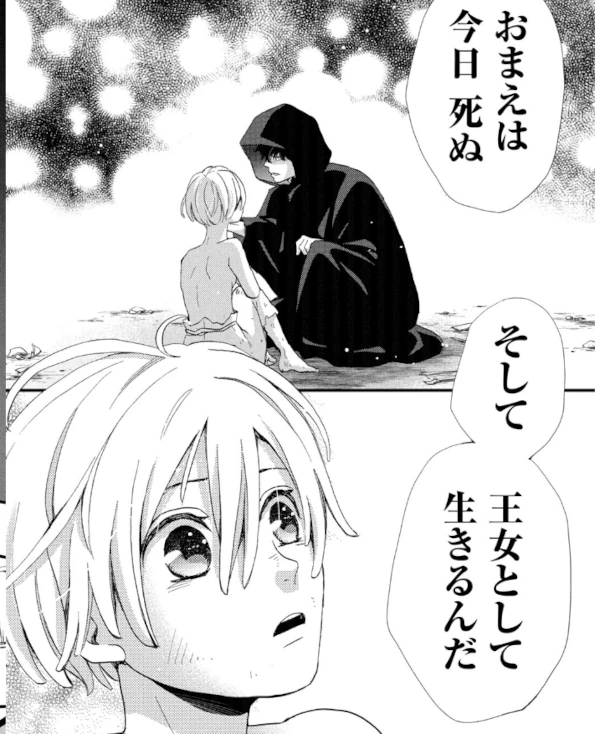
Why this manga is suitable for learning Japanese
This manga is not only entertaining but also highly recommended for Japanese learners for several reasons.
Nina’s Dual Speech Styles
Originally rough in her speech, Nina learns refined language upon entering the palace. This contrast highlights how polite versus casual speech creates very different impressions, giving learners a clear sense of both styles in action.
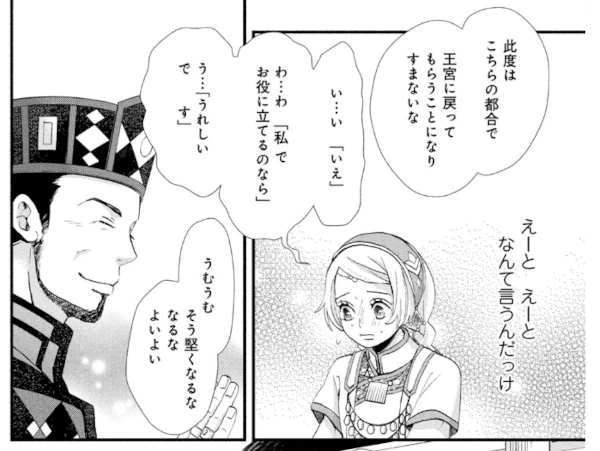
Examples of Polite Speech Toward Superiors
Set largely within the royal palace, the manga is filled with examples of formal language. Servants speak politely to Nina and Prince Azure, while even Nina and Azure themselves use honorific speech when addressing the king or princess—offering plenty of real-world examples of respectful language in hierarchical settings.

Culture Spotlight
When Girls Use Masculine Pronouns in Japaneseボクっ娘とオレっ娘
The heroine of this story, Nina, refers to herself using ore—a traditionally masculine first-person pronoun—perhaps to emphasize her rough upbringing and impoverished background. You might wonder: Is it only in fictional worlds like this that women use pronouns like boku or ore?
The answer is no—not at all.
While you might expect a Japanese girl to refer to herself with watashi (私) or atashi (あたし), some girls and women choose boku (僕), or even ore (俺). These unexpected pronouns are part of a fascinating linguistic and cultural phenomenon in Japanese known as ボクっ娘 (boku-kko) and the rarer オレっ娘 (ore-kko)—girls or women who speak using traditionally masculine first-person pronouns.
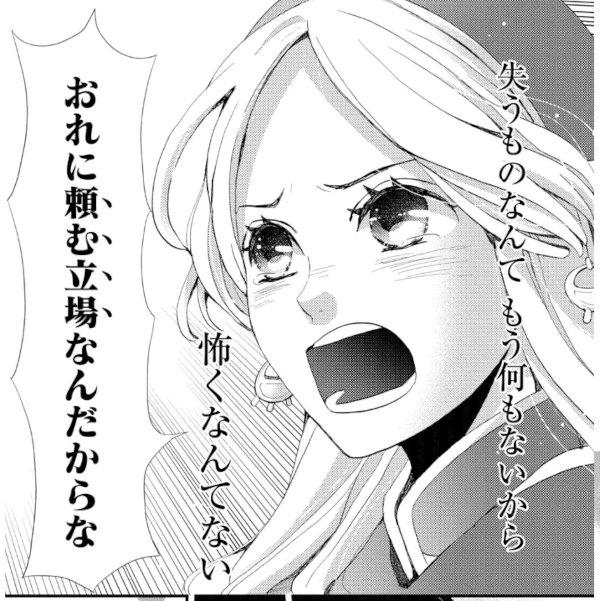
Not Just for Boys: The Meaning Behind Boku and Ore
In Japanese, the choice of first-person pronoun carries strong social and gendered nuance:
・わたし (watashi) – Gender-neutral or feminine, polite and standard.
・あたし (atashi) – Casual and feminine.
・ぼく (boku) – Gentle, humble, and traditionally used by boys or young men.
・おれ (ore) – Rough, assertive, very masculine.
When girls use boku or ore, it challenges these expected roles. These speech styles don’t necessarily imply confusion about gender. Instead, they can reflect:
・A tomboyish personality
・A cool or intellectual image
・An alternative, creative identity
・A subtle resistance to gender norms
This isn’t just a fantasy or anime trope—it appears in real-life Japanese too, both past and present.
Real-World Boku-kko: Not a New Trend
While pop culture introduced the term “ボクっ娘,” women who use boku in real life have existed for decades—especially in artistic, queer, or countercultural spaces.
For example:
・Writers and musicians have historically used boku in interviews or lyrics to signal emotional distance, intellectualism, or personal flair. ・Queer or androgynous individuals may use boku or ore as part of their authentic speech. ・TV personalities, like Ano-chan (あのちゃん), use boku to express a quirky or vulnerable persona.
Real-Life Example: Ano-chan
Singer and media personality Ano-chan regularly refers to herself as boku, adding to her mysterious and offbeat image.
・「ぼく、うまく話せないの……」
・“Boku can’t really speak well…”
Her use of boku feels shy, odd, and emotionally distant—all of which contribute to her appeal.
Fictional Examples: From Goddesses to Detectives
ヘスティア from DanMachi
「ボクは君の力になりたいんだ!」
“I (boku) want to be your strength!”
As a goddess who’s affectionate yet assertive, Hestia’s use of boku gives her a soft confidence.
世良真純 (Sera Masumi) from Detective Conan
「ボクのことは“高校生探偵”って紹介してくれればいいよ」
“You can just introduce boku as a high school detective.”
Masumi’s boku matches her boyish appearance, sharp mind, and independent nature. In both cases, boku signals intelligence, emotional control, or strength, while creating a slightly androgynous tone.
What About オレっ娘 (Ore-kko)?
Far less common than boku, ore is a brash and informal masculine pronoun. Girls who use it tend to be extremely bold, rebellious, or defiant. An ore-kko character might appear in punk subcultures, yakuza parodies, or over-the-top comedies—but is rarely seen in real life.
That said, some real women do use ore—typically as part of a deliberate and expressive persona, not casual speech.
What Language Learners Can Take Away
Understanding boku and ore beyond the surface helps learners grasp:
・The fluidity of gendered language in Japanese
・How characters’ speech reflects personality
・The rich expressive power of pronoun choice
While you probably shouldn’t start calling yourself ore if you’re trying to sound polite, being aware of these patterns adds nuance to how you listen, read, and interpret Japanese.
Next time you hear a girl say boku, consider: what kind of story is she trying to tell?
A Little Warning
Nina’s casual speech can be rough
When speaking with those who know her true identity, like Azure, or with people she feels no need to impress, Nina reverts to her blunt, informal way of speaking. Learners should be cautious not to imitate these rough expressions in real-life conversations.
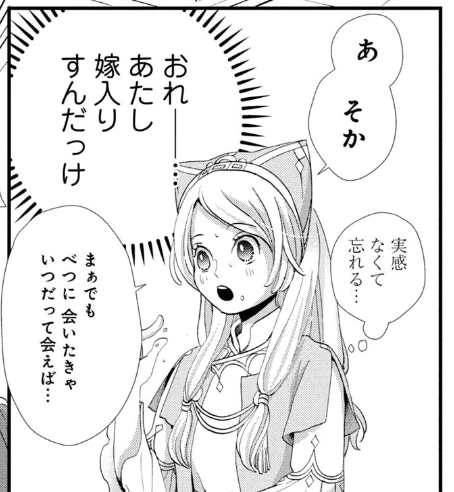
Work Information

Nina the Starry Bride (星降る王国のニナ)
Author: RIKACHI
Publisher: KODANSHA
Amount of text: moderate
Challenge level: ★★
Latest volume : Vol.16(Apr.2025 / Ongoing)
Here’s a safe and convenient way to purchase Japanese manga.
This Blog’s ConceptIn this blog, we are introducing manga that are not only highly captivating but also ideal for Japanese language learners. Studying Japanese through manga is both fun and effective. Manga allows you to understand the subtleties of keigo (honorifics), teineigo (polite speech), and casual conversation in Japanese. We hope you find works that match your interests and use them to enhance your Japanese learning journey.